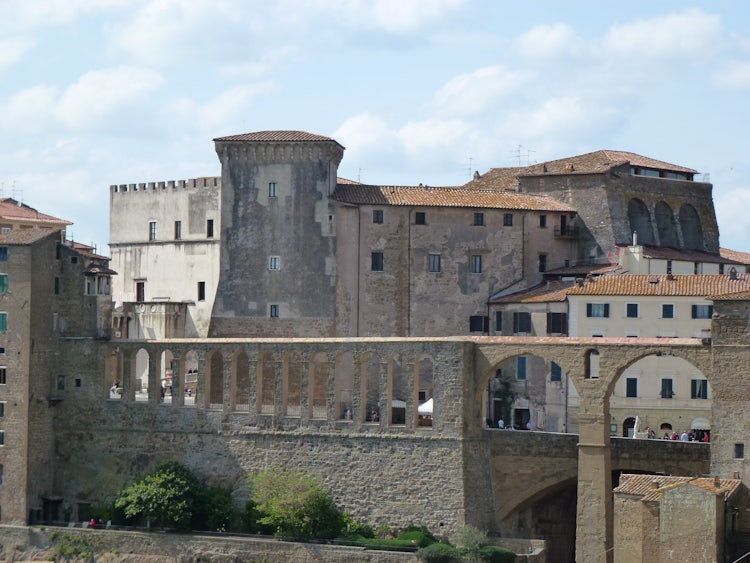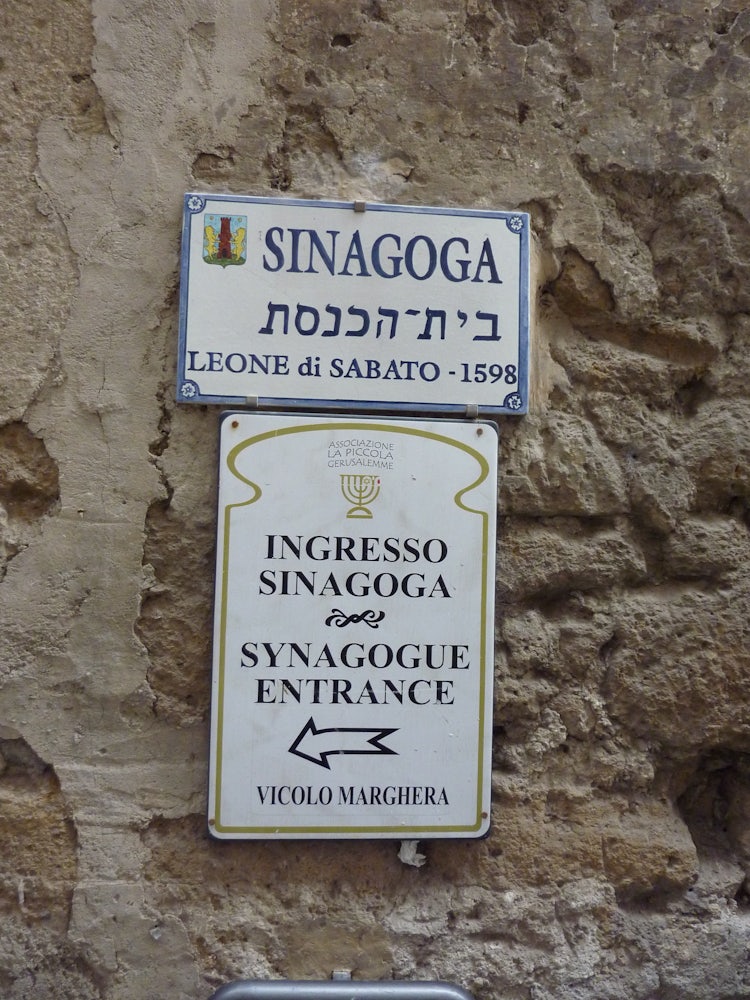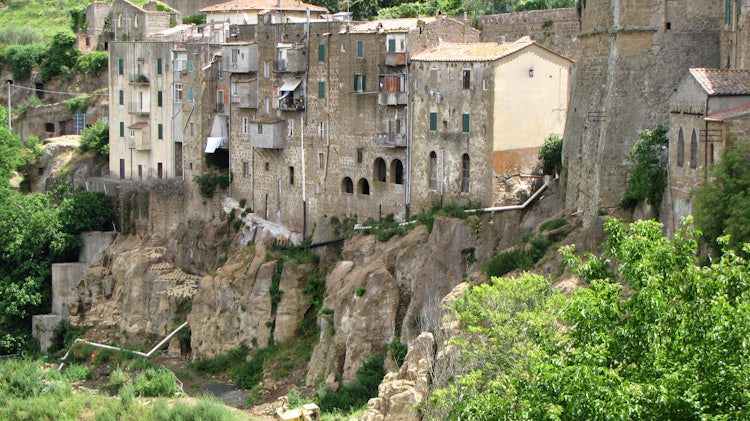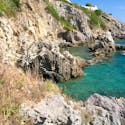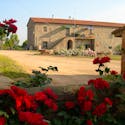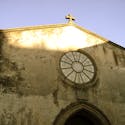From the Bronze Age to WWII, this little town captures the essence of Italy
Carved from volcanic stone, the town of Pitigliano is ocated south of Montepulciano, and not too far from the thermal mineral waters of Bagno San Filippo.
The cliffs of Pitigliano, Sovana and Sorano protected the remains of the many peoples who called the Fiora Valley, and its protective peaks, their homes since 2300 BC.
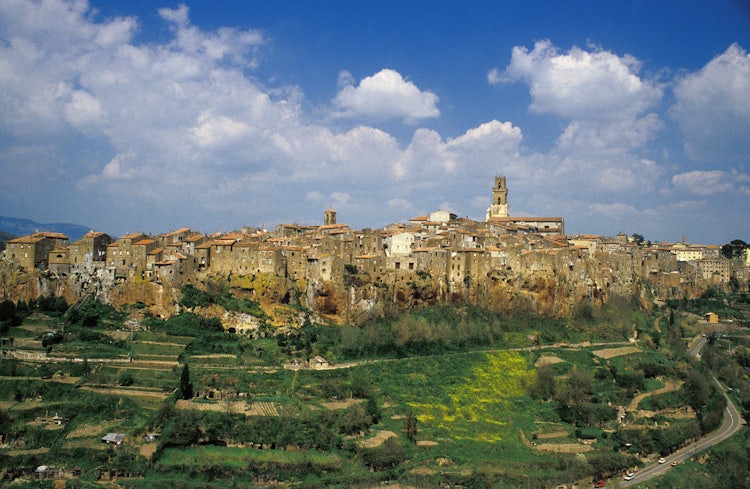
Pitigliano Stands Out from the Rest
The peculiarities that would have this area and this small town stand out from the rest are numerous. ou start by looking for the remains from the Bronze Age, Neolithic times and even the Copper Age — many of which are visible in various local museums.
Then, there are the ruins of a necropolis and the remains of a temple, evidence which suggests an Etruscan community was here in the VI century. It is possible though, that around 500 B.C., they were destroyed by Porsenna, the King of Chiusi.
Though the Roman presence is less visible to the naked eye, there is ample proof that they attempted to build on the plateau in front of Pitigliano.
Bringing us up to the 1600s where one can still admire the Medici aqueduct in the town center.
Noteworthy is the documentation of a large Jewish presence in this town starting in the early 1600s. Ferdinando I, Grand Duke of Tuscany, made it easier for this highly persecuted population to settle down in this area. The area has also distinguished itself for the role it played in helping the Jews escape from the racial laws and opposing forces during WWII.
Where to Find Pitigliano
Practically carved out of "Tufaceous" rock (volcanic rock) the town of Pitigliano sits upon one of the suggestive tuff spurs, conferring a unique beauty to the town landscape. Pitigliano makes up part of an area called "borghi del tufo" — towns carved of tuff stone — located quite close to the border of Tuscany and Lazio. This position makes Pitigliano an ideal base for discovering the beauty of these two regions in Italy.
In Tuscany, you are only an hour away from the coast (Talamone, Capalbio and Porto Santo Stefano), famous wine regions (Vino Nobile and Scansano) and the picturesque roads of Val d'Orcia. Instead, in the region of Lazio you can visit the Bolsena Lake, the town of Orvieto or Civita Bagnoregio and several Etruscan strongholds, such as Tarquinia. Plus with a short drive you can reach a major train hub (Chianciano Terme or Orvieto) where you can catch frequent trains to Florence AND Rome - no need to take your car into the city and battle with the traffic.
Flavors to discover...
Much of the Tuscan countryside boasts unique and flavourful dishes, many of which have come into being due to the ingenious use of the limited ingredients. Sometime though, the recipe honors the past. One excellent example is the “sfratti”, a stick-shaped biscuit filled with ground walnuts, honey, nutmeg, orange peel all wrapped in dough. (A good place to try this recipe is at Panificio del Ghetto at 167 Via Zuccarelli, near the synagogue.) The word “sfratti” is derived from “sfratto”, which translates to eviction.
Legend has it that the police would hit Jews with rods to force them into the ghettos; the Jews subsequently transformed their pain into something edible.
Wine to savor
The tradition of wine in this area is based on Tuscany's white grape of choice (Trebbiano Toscano). Bianco di Pitigliano, is a crisp white wines with floral and mineral notes. There are also several red wines to be tried, the more famous fall under the Morellino di Scansano or Sovana DOCs. The wines from this area are celebrated in a special event called SettembrediVino, when they open up the cantinas (wine cellars) carved from stone in the cliffs of Pitigliano.
A Guide to the Town's Monuments
You will do best to park your car outside the city walls and stroll the town center by foot, that way you can admire the the town's walls and gates. If you visit north-western part of the town, you will still find traces of the Etruscan walls and the Porta Sovana originally built by the ruling Aldobrandeschi family in medieval times only to be rebuilt later. This entrance to the town was excavated in the tuff and leads you to the vie cave and the necropolis of Sovana.
The southern part of the town has a section of wall, almost certainly late-medieval, where you will find the pillars of the imposing Medicean aqueduct. The redevelopment work carried out by Orsini, the family who took over once the Aldobrandeschi had no more male heirs, features a fortress bastion and other fortified structures surrounding the historic center.
Churches To Find:
Santi Pietro e Paolo Church: it serves as a parish church and cathedral. It was built in medieval times (1061 is the first time it was documented), restructured during the sixteenth century and then successively profoundly modified. Today, both the exterior and the interior boast a sober eighteenth-century baroque. There is a 35 foot bell tower, which was originally built for civil/military purposes and then designated as the church “campanile”.
Santa Maria and San Rocco Church: Many consider this church to be probably the oldest in Pitigliano, and also the most significant from an artistic point of view. Totally reworked, the façade is late-Renaissance, and is decorated in the lower part by four corinthian columns and a portal. There are several 17th century frescoes inside(Assumption of the Madonna between the apostles, two Sibilla), and most colorful are the paintings above the apse representing nine coats of arms of those who once ruled the town (the Medici, Lorraine, Savoy, the Community of Pitigliano, Pope Pius IX, some Bishops and the Chapter of the Cathedral).
The Tempietto ("Small temple"): a small cave not far from the city center probably of natural origin, but considerably reworked by human hands. Inside there are 3 areas with a vaulted ceiling reaching about 2 meters. Though its original purpose has been lost over time, the locals commonly refer to it as il tempietto - a general name which could indicate its antique origins as an Etruscan tomb, Roman temple or simply a shrine.

Le Vie Cave
Known as the “excavated roads” (the vie cave in Italian) are still very much a puzzle for historians and archaeologists. What we do know for certain, is that they were of great importance, since they required the removal of over 40,000 tons of volcanic rock! The obvious question is: What makes a culture dig open tunnels which are meters deep and kilometers long in solid rock?
These questions have not yet come up with precise answers, some assume a use of sacred and funerary character, other theses argue that they are connecting paths, defensive systems, or even works for water outflow.
Another interesting theory suggests: their construction may have mainly resulted from the constant wear and tear of the iron-rimmed wagon wheels from the Etruscan and Roman times, creating deep ruts that required the road to be frequently recut to a smooth surface.
You can explore them on your own, or with a guided tour. This link has walking trails (unfortunately it is only in Italian, but you can translate the page). It offers details on the various paths, many of which are suitable for all levels. You can also explore the suggestive horseback riding opportunities.
Also Known As Little Jerusalem
Without a doubt, Pitigliano is best known for its nickname “Little Jerusalem” thanks to the position close to Rome, where escaping Jews could find refuge. Pitigliano, as early as the 14th century, became an important haven for the Jews, and their numbers grews so much so that they built a Temple in 1598.
In the beginning of the seventeenth century, when the Medici annexed Pitigliano, the Jews who were residing there were confined in "ghettos". However, the local government realized the pivotal role they played in economic and commercial activities, and took unprecedented action to improve their status with fundamental rights, such as the ability to possess land.
In 1556 Niccolò IV Orsini, who was favorable to the presence of Jews within his territory, gave to his personal physician, David de Pomis, land on which to establish a Jewish cemetery.
This deep rooted relationship between the Christians and the Jews grew throughout the years leading to many events of solidarity. For example in 1799, when the non Jewish population defended the Jewish people from the bullying when the French military that wanted to sack the Ghetto and then later, during World War II, when many locals offered refuge and assistance to protect them from harm.
Jewish Museum, Synagogue and Ghetto
There are several points of interest within the ghetto, including the Kosher (Kasher) butcher, the cellar where the kosher wine was produced, and a Jewish bakery for the unleavened bread. Not only are they interesting for the religious aspect, but also the architecture:
the Jews adapted the already-existent excavated spaces to meet the needs of their community
As for the daily life in the ghetto you will find several points of interest: a ritual bath (Miqve'), the Synagogue – Bet Ha-Kneset, the Jewish Cemetery mentioned above and a dye-works area (since many Jews were weavers and traders in textiles).
Fore more Information: Official Website
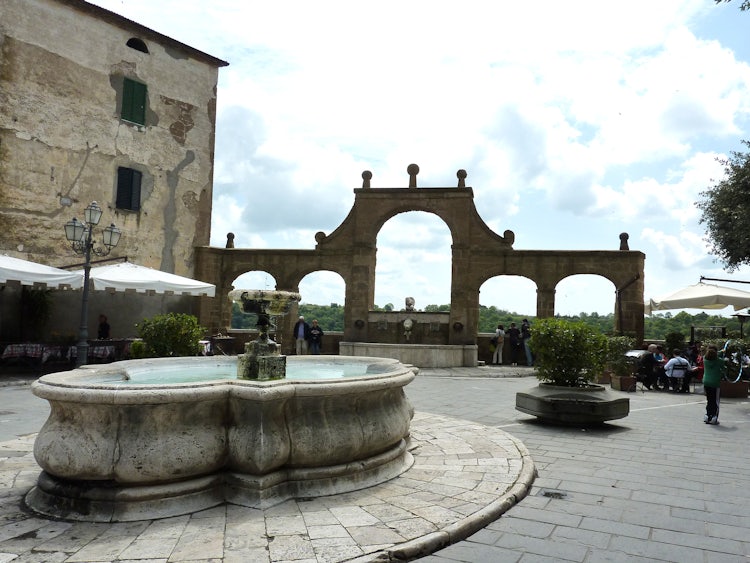
Museums
Alberto Manzi Outdoor Archaeological Museum: This is the type of museum which is designed to bring the past to life in a way that will engage not only adults but especially children of all ages. Within the park you will find a reconstruction of the:
various phases of urbanization, from the articulated proto-historic village of the end of the Bronze Age, represented by an almost full-scale didactic model of a circular hut dwelling, to the Etruscan town, represented by a three-room house with porch, which allows visitors, with virtual views, to glimpse inside.
More information, including opening hours, tickets
Civic Archaeological Museum of Pitigliano: an important representation of the story of the land featuring artifacts ranging from the Bronze age to the Etruscans and necropolis in Poggio Buco. It is even possible to view live restoration work on ceramic vases which have been recuperated in the many digs in the area.
More information, including opening hours, tickets
Palazzo Orsini and Museum of Sacred Art: not only does this museum host a collection of artwork from the local churches but you will also have a unique opportunity to experience the atmosphere of the life of the Orsini family: elegant vaults, painted wooden ceilings, in a historic palace, with narrow, winding hallways, steep stairs and secret rooms hidden in the shadows.
Museum Information: Official Website

